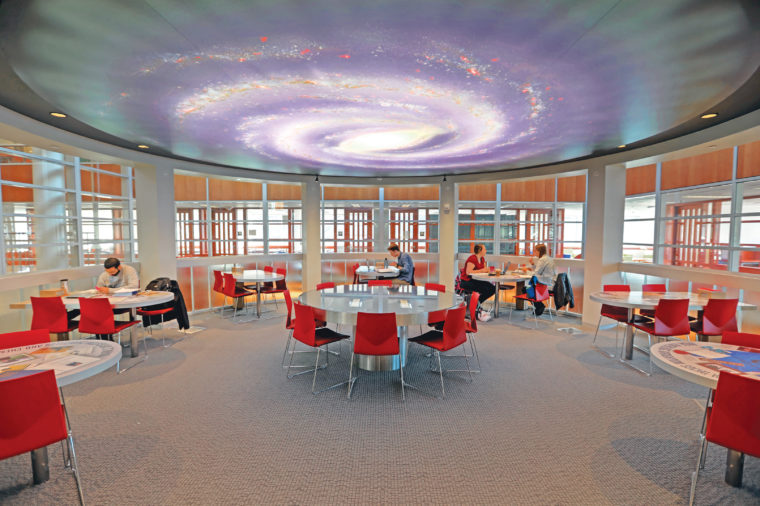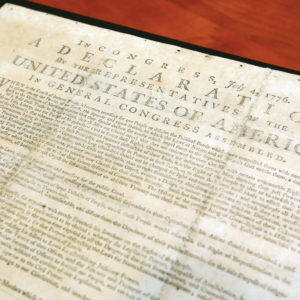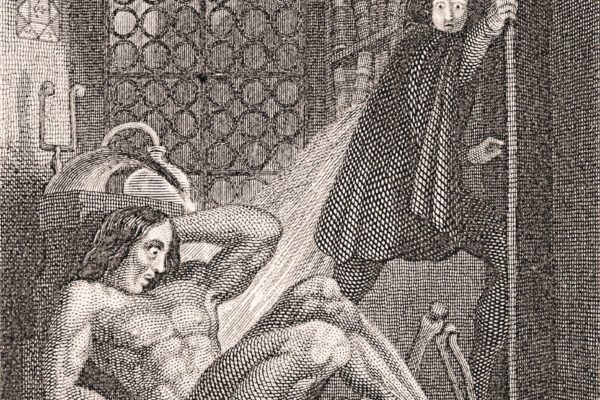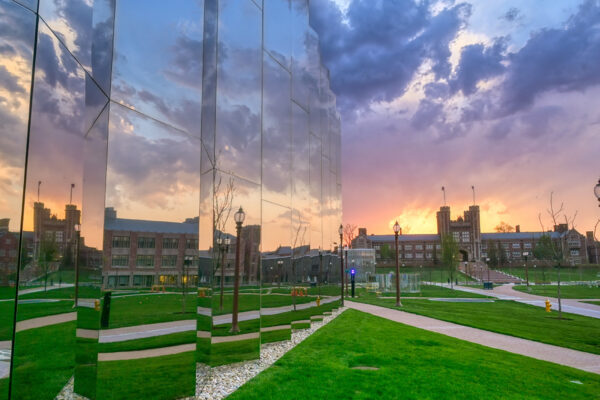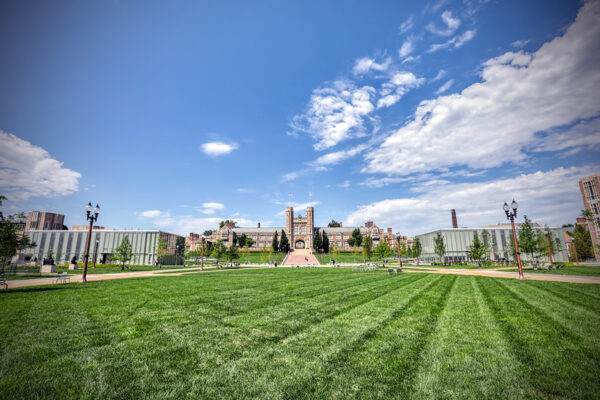Since 1962, John M. Olin Library has stood — physically and academically —
at the center of Washington University. In its early days, students would stand before Olin’s large, oak card catalogs, flipping through index cards in search of the right book about abstract expressionism or John Maynard Keynes or thermodynamics.
Today, the card catalogs are gone. And, for that matter, so are some of the books. Yet, now more than ever, Olin plays a central role in the way students, faculty and members of the community learn, collaborate and create new knowledge.
“Times have changed and technology has evolved, but our mission has remained constant: to support researchers and scholars through top-notch resources, services, instruction and facilities,” says Denise Stephens, vice provost and university librarian. “The transformation of Olin Library helps us achieve that goal.”
Completed this spring, the transformed Olin Library offers a range of new spaces for discovery, collaboration and instruction. Students can grab a nitro cold brew at the expanded Whispers coffee shop, marvel at a rare copy of the Declaration of Independence by the Jack E. and Debbie T. Thomas Gallery, study for the big test in Risa’s Landing, or explore a 3D rendition of a mastodon skeleton in the Data and Visual Exploration lab. The new Olin Library also features 7,500 square feet of additional storage for WashU’s special collections, one of the largest and most diverse in academia.
Part of the Leading Together campaign, Olin’s transformation was funded by the Eric P. and Evelyn E. Newman Foundation and the Eric P. Newman Numismatic Education Society, which provided the lead gift of $10 million; Trustee Andy Newman and his wife, Peggy; Trustee Jack Thomas and his wife, Debbie; Adele Braun Dilschneider, the granddaughter of John M. Olin; Hope and the late Julian Edison; Ken and Nancy Kranzberg; and many other supporters.
Supporting learning, inspiring exploration
It all started with the students, says Sarah Laaker, project manager for University Libraries.
Olin leadership understood that many students spend as much time in the library as their dorm rooms. So they made the new Olin feel like home with comfortable chairs and good coffee.
Indeed, the transformation’s most innovative design feature, the Newman Tower of Collections and Exploration, is also its most inviting. Each level of the four-story glass tower delivers a unique experience. On Level A, the Newman Exploration Center is furnished with leather club chairs, large prints of Washington University students traveling the globe and clocks set to local time in Santiago, Florence, Johannesburg and other study-abroad destinations. Level 1 of the Newman Tower showcases artifacts from the Julian Edison Department of Special Collections and offers access to Whispers, the busy and beloved campus coffee spot. On Level 2 of the tower is Risa’s Landing, a destination for group study. And the top level is the Sky Room, a quiet study area named for its wide-open views of the sky.
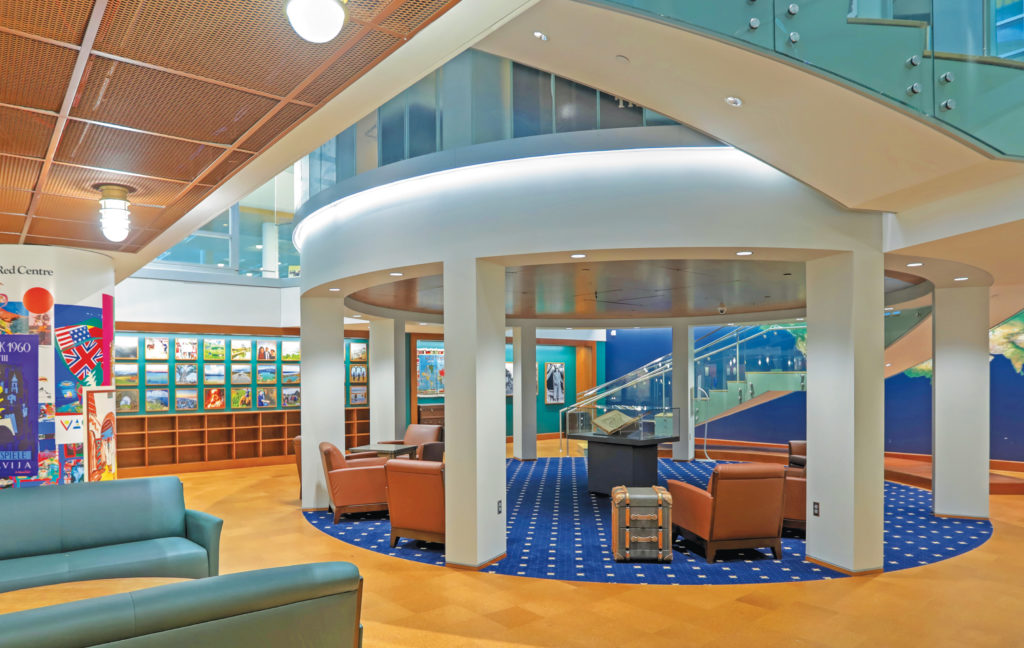
“Just like no chair suits every person, no one environment suits every person,” Laaker says. “So we have created different environments to serve different needs. We hope every student finds a new favorite place.”
Staff also wanted to provide more and better access to all the library has to offer — yes, the 1.8 million books and periodicals, but also the millions of datasets, software licenses, 3D objects, e-books, videos and rare artifacts. So they created instructional spaces and labs where library experts can teach students how to navigate and use Olin’s abundant resources.
“Information literacy is a big priority. It’s not enough to make these resources available; we want to show our students how to use them in a way that supports their learning and research.”
— Sarah Laaker
“Information literacy is a big priority,” Laaker says. “It’s not enough to make these resources available; we want to show our students how to use them in a way that supports their learning and research.”
Take, for instance, the Research Studio. Equipped with powerful computers and specialized software, the lab serves as the Danforth Campus’ physical and intellectual home for data curation and analytics. The lab can take students back in time to see the St. Louis suburbs of the 1950s or fly them to outer space to see the mountains of the moon.
Aaron Addison, director of data services, helps students on their journeys. As a researcher, he has mapped caves in Missouri, coastal erosion in India and lava tubes in the Galápagos Islands. He also instructs Brown School students on how to layer data, such as public-health, demographic and land-use records, to identify and support communities in need.
“We use maps and data to bring a place-based approach to research,” Addison says. “It’s an emerging core library service — one that is becoming more and more important to researchers as they try to make sense of complex relationships.”
Building a time machine
The transformation also provides a new home for the Julian Edison Department of Special Collections. With more than 1,000 collections, the department is among academia’s largest and most diverse. And, yet, University Libraries lacked the space and resources to showcase its holdings — until now.
The new Jack E. and Debbie T. Thomas Gallery, located along the corridor that connects the south entrance to the new north entrance, features museum-quality exhibition space, including a chamber to house a rare copy of the Declaration of Independence (see related story, Broadly speaking, it’s historic, above).
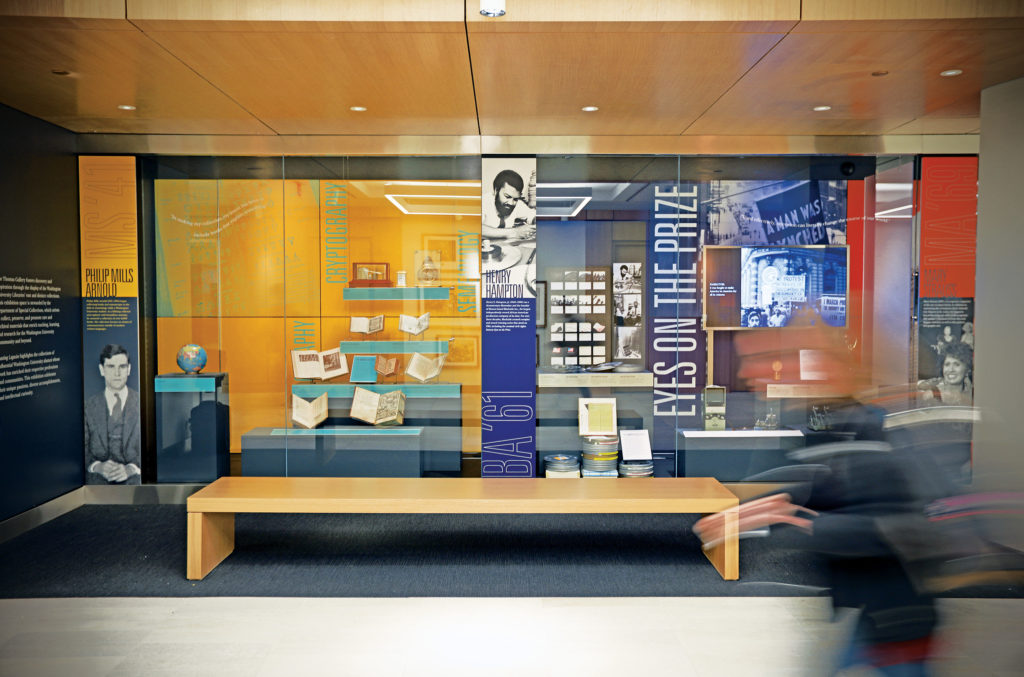
The department’s opening exhibit, Lasting Legacies, is a tribute to noted alumni that features a letter from a young Barack Obama to Henry Hampton, the leading documentary maker of the civil rights movement, and a university blue book of playwright Tennessee Williams, Washington University’s most famous dropout.
Level 1 of the Newman Tower of Collections and Exploration features six cases for small exhibits and currently is displaying St. Louis Browns memorabilia, Biedermeier greeting cards and a handwritten inventory from Michelangelo.
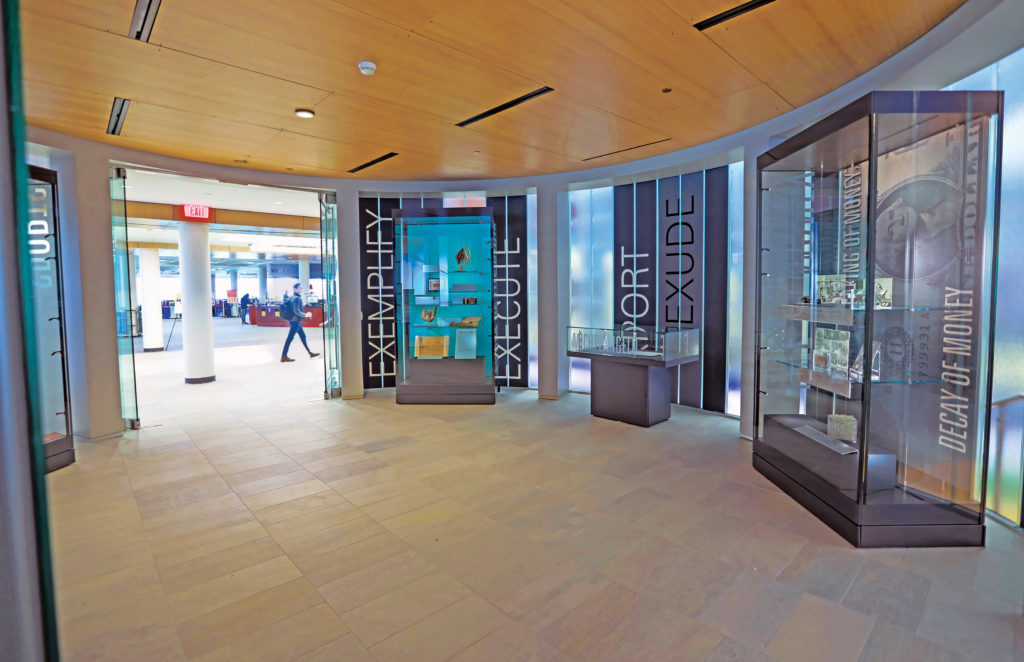
Unlike a museum, the university’s special collections are available for public use.
“One thing I hear all the time is, ‘That’s amazing! Can I see it? Can I touch it?’ And the answer typically is, ‘Yes, you can,’” says Nadia Ghasedi, associate university librarian. “These objects are the ultimate evidence. Students are like, ‘Wow! This is THE thing.’ Knowing that what you are holding is what the creator put together with his or her own hands really does provide a connection to the past. It’s the closest thing to a time machine we have.”
Diane Toroian Keaggy, AB ’90, is senior news director of campus life.
